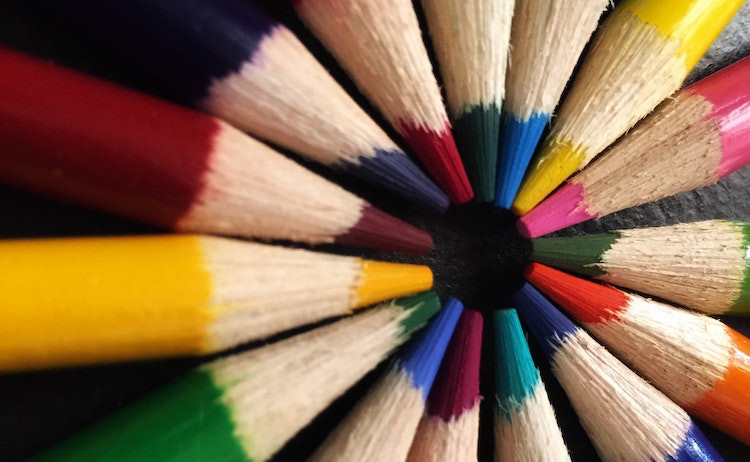Article by Thomas Clement-Christensen, M.Sc. Psych., Senior Consultant, A&D Resources
Public opinion now acknowledges what studies have shown for years, that not only is it morally and legally the right thing to do to ensure equal rights and opportunities in the workplace, but it also makes financial sense from a business perspective as diverse teams and organisations, in general, perform better. Nonhomogeneous teams have an advantage in terms of the spectrum of individual differences that can inform decision-making and spur innovation (Rock D. & Grant H., 2016) and diverse organisations are a lot more likely to attract talents broadly (Deloitte, 2022).
According to the recent Gender Gap Report (World Economic Forum, 2022), it will however still take us 132 years to reach global gender parity – that is in the year 2154! When it comes to women’s representation in leadership, we see a slight improvement in the share of women being hired into leadership climbing from 33.3% in 2016 to 36.9% in 2022, but these numbers hide the fact that even in industries that are typically female-dominated, women do not make up more than about half of the leadership population. On a positive note, some (traditionally male-dominated) industries are now seeing an acceleration in their hiring of women into leadership positions, but it will take time. When it comes to ethnicity, data also points toward things moving very slowly (McKinsey, 2020).
The good news is that there are some companies that are able to move the needle faster than others when it comes to increasing diversity. Leaders play a key role in those efforts and hence organisations need to work on making sure that their people managers throughout the entire leadership pipeline own this agenda and foster an inclusive culture in their teams, where everyone feels welcomed, respected, supported, and valued (McKinsey, 2020). The question is, how do we spot these leaders? One way is of course to ask the employees, but if you want to spot them up front, another way is to investigate what characterizes such leaders, when it comes to their personality and values.
To help organisations be able to identify and develop inclusive leaders, Hogan Assessments decided to look into what characterizes people who champion the DE&I agenda.
Hogan Assessments consist of three separate measures:
- The Hogan Personality Inventory (HPI) describes normal, or bright-side personality – qualities that describe how we relate to others when we are at our best.
- The Hogan Development Survey (HDS) describes the dark side of personality – qualities that emerge in times of increased strain (or when people are not able to self-monitor) and can disrupt relationships, damage reputations, and derail peoples’ chances of success.
- The Motives, Values, Preferences Inventory (MVPI) describes personality from the inside – the core goals, values, drivers, and interests that determine what we desire and strive to attain.
Through meta-analysis, Hogan aggregated correlations between the three assessments and several performance indicators across 47 organisations and more than 5,000 people across 85 countries to identify the personality characteristics that predict inclusive behaviours. The behaviours were categorised under two main headings: Leveraging diversity – Respects and values individual differences to obtain a desired effect or result, and Caring about people – Displays sensitivity towards the attitudes, feelings, or circumstances of others (Nei, K., 2022).
When it comes to the bright side of personality (as measured by the HPI), Hogan found that Adjustment, Interpersonal Sensitivity and Prudence have positive relationships with inclusion behaviours. What this means in practice is that if you want to select or develop inclusive leaders, you will want to target leaders who are patient with others, don’t personalise criticism, leaders who are optimistic, perceptive, build trusting relationships, and who are good organisational citizens.
Furthermore, when looking into the dark side of personality (using the HDS) they found, that Excitable, Sceptical, Bold, and Mischievous have negative relationships with inclusion behaviours. Such leaders tend to be intolerant or hard to please, suspicious of others’ intentions, entitled and unlikely to seek others’ opinions, and ignore the concerns of others. Instead, we would want leaders who are able to stay tolerant, open-minded, modest, and willing to listen and learn – also under pressure.
Finally, Hogan also found, that when it comes to personal values (as examined by the MVPI) Recognition and Power have negative relationships with inclusion behaviours, while Altruistic has a positive relationship with such behaviours. Leaders who are ego-centered and want to be in the spotlight are less likely to champion inclusive behaviours compared to leaders who are humble, sympathetic, and concerned about helping others. On the other hand, we do not want to give up on leaders who are motivated by authority, impact, and influence, as this positively predicts other leadership performance outcomes, but a key development point for many such leaders could be to work on how they strike the right balance between this drive and being inclusive.
Summing up, we now have some concrete evidence that tells us what to look for in selection and what to focus on if you are looking to build inclusive leadership in your organisation. When it comes to leadership development it is important to underline, that the goal isn’t to change peoples’ personalities, but to help the leaders understand how their personality, preferences and values affect their decisions, their behaviours and the impact they have on the people around them.
References:
- Deloitte, Striving for balance, advocating for change – The Deloitte Global 2022 Gen Z & Millennial Survey
- McKinsey & Company, Diversity Wins – How Inclusion Matters, 2020
- Nei, K., Hogan Assessments, Leveraging Hogan in Your DEI Strategy, Presentation at A&D Resources Annual Event 2022.
- Rock D. & Grant H., (2016), Why Diverse Teams Are Smarter, https://hbr.org/2016/11/why-diverse-teams-are-smarter
- World Economic Forum, Global Gender Gap Report 2022




